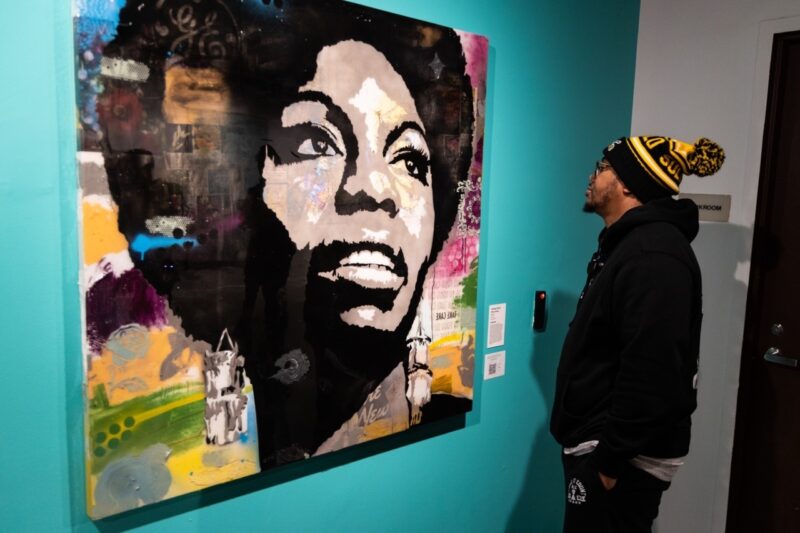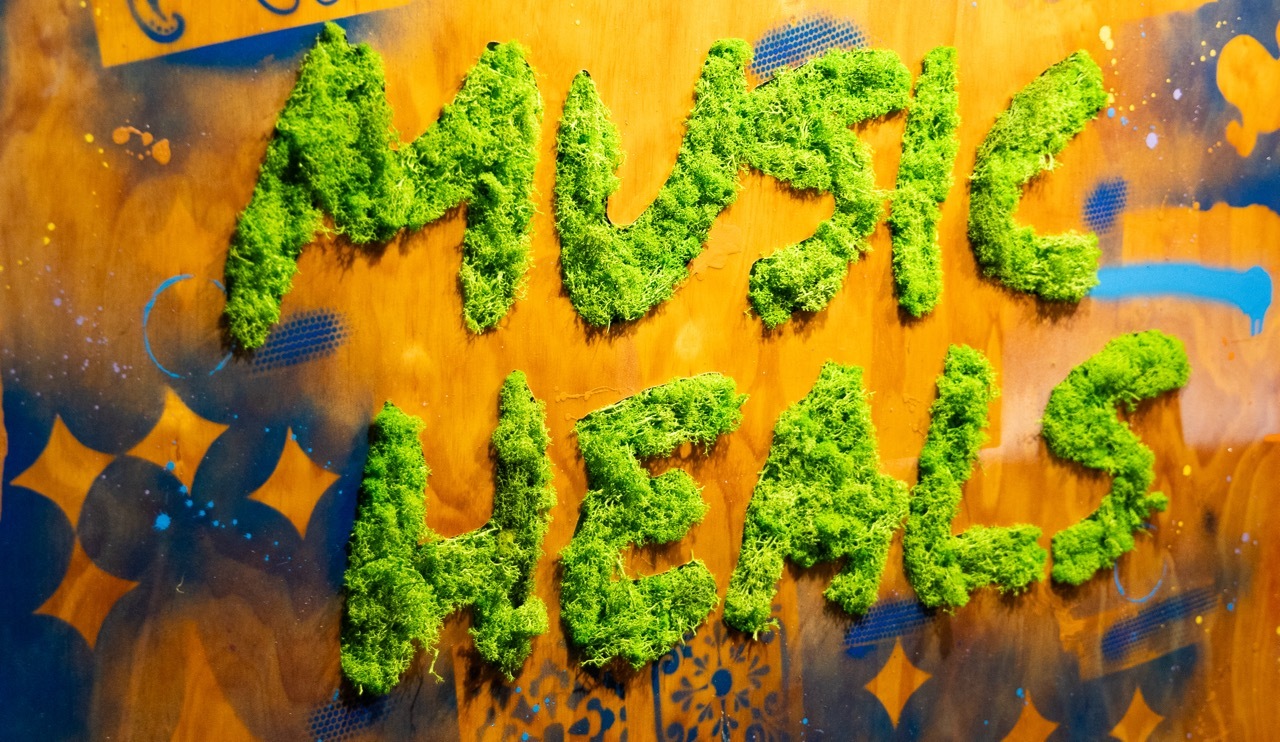They Will Sing Forever: Musical Immersion at Positive Frequencies
Review of Positive Frequencies at Northwest African American Museum
Written by TeenTix Newsroom Writer Callaghan Crook and edited by Teen Editorial Staff Member Aamina Mughal

How many museums not only tell grounded stories with honesty and celebration but welcome their visitors with a community living room and a book vending machine? The Northwest African American Museum is advertised as a “museum that uses Black heritage to cultivate healing and hope for all,” and I sensed that as soon as I walked in. In the main exhibit, screens flash with students and community members naming their heroes, claiming the museum as “ours,” and offering it to all as “yours.” Plaques, posters, and art document Black Americans’ victories, setbacks, injustices, pain, joy, and resilience with respect and love. NAAM is a welcoming, celebratory, healing space, and the art and artists of the exhibit Positive Frequencies embody that.
Positive Frequencies features “iconic Neo-POP artist” C. Bennett, along with local artists Eric D. Salisbury, Myron Curry, and Samuel Blackwell. Bennett’s mixed media pieces line half the gallery, while paintings by Salisbury, Curry, and Blackwell line the other half. Music by artists like Aretha Franklin, Ray Charles, and Nina Simone plays, immersing the viewer in the exhibit’s thesis: music can heal by “transcending societal and cultural boundaries.” All four featured visual artists approached that theme differently, but when all the pieces are viewed as a collection, with the music they sought to capture and elevate playing around them, their connection and power are deep and palpable.

Bennett’s pieces are dynamic collages bursting with energy. The collection is composed of iconic images of Black singers, musicians, and Civil Rights activists frozen in the middle of action as well as sentiments from the artist to the world. Bennett has caught his subjects in moments of resonance and framed them against backgrounds packed with photographs, newspaper cutouts, magazine advertisements, elementary homework assignments, and layers of paint and glitter. Some of the subjects, like Muhammad Ali, are crowded by everything going on around them, surrounded by opinions and action but ready to fight their way out. Others, like Rosa Parks, are illuminated by stars and sparkles and seem freed by the colorful chaos around them. Still others are emerging from their backgrounds, or embracing them, or simply coexisting with them. By integrating portrait and abstract collage in such a way as to make each dependent on the other, Bennett has captured how each of his subjects—and by extension, each of us—is both influenced by and part of their environment, both uplifted by and uplifting our collective story.
A piece of Bennett’s titled Words To Live By features the words “Make Music Not War” in block letters against teal and pink paint with newspaper peeping out from under layers of glitter. Set against the shine and colors, with no punctuation to impede it, the phrase feels not like a command or a reprimand, but a choice and a hope. It feels simultaneously like Bennett’s mission statement and his appeal to the world.
On the other side of the gallery, the music playing from the speakers competes with the music I can hear in my head when I look at Eric D. Salisbury’s paintings. While Bennett’s work encompassed the artist, their music, their listeners, their impact, and the world they lived in, Salisbury’s pieces embodied music itself. I could hear the melancholy jazz pouring from a blue piano, its player mournfully smoking a cigarette. Brass instruments harmonized as I took in a piece titled The Duet, and Billie Holiday’s belt resonated in my mind as her soul poured out of her mouth.
In contrast, Myron Curry’s portraits examined the artists, opening them to the viewer. Under Curry’s brush, wrinkled skin, stray hairs, and hard eyes are emphatic and beautiful, transmitting something private and unique about the face they are set in. Curry amplifies each of his subjects in a different way: softly blurring one’s edges, adorning another with a shroud and halo, playing with light reflected on the skin for a third. Each piece is highly specific to its subject and captures them in a candid moment, unmasked and vulnerable.
Samuel Blackwell’s work completes the exhibit by capturing the spaces in which music resides. In one painting, the space around a trombonist’s instrument and microphone feels charged with energy, and I can sense the stage and a packed room beyond, eagerly receiving the music. The negative space is a vital part of the piece, a visual representation of music pervading the space. Another piece shows an artist slumped at a restaurant table, in a space where they experience the things that shape their art.
What made Positive Frequencies truly immersive was the music playing in the background. It tied the exhibit together thematically and kept me grounded in the subject matter and ideas of the space as I viewed each piece. When my mind wandered, as it sometimes does in galleries, the music gave me something to focus on until I was ready to take in art again.
Positive Frequencies is healing, celebratory, exploratory, questioning, and deeply connected. The different artists, their unique styles, and their range of techniques and subjects overlaid with the music they sought to celebrate, build a powerful experience. The themes they embody are too much to be connected with one thread, but instead with many threads, interweaving and overlapping and picking up where another left off. The artists and activists honored here have been captured in their joy and pain and laughter and imperfection, in all their life and passion and love. Here, they will sing forever.
Lead Photo Credit: Courtesy of Elite Collective
The TeenTix Newsroom is a group of teen writers led by the Teen Editorial Staff. For each review, Newsroom writers work individually with a teen editor to polish their writing for publication. The Teen Editorial Staff is made up of 5 teens who curate the review portion of the TeenTix blog. More information about the Teen Editorial Staff can be found HERE.
The TeenTix Press Corps promotes critical thinking, communication, and information literacy through criticism and journalism practice for teens. For more information about the Press Corps program see HERE.


